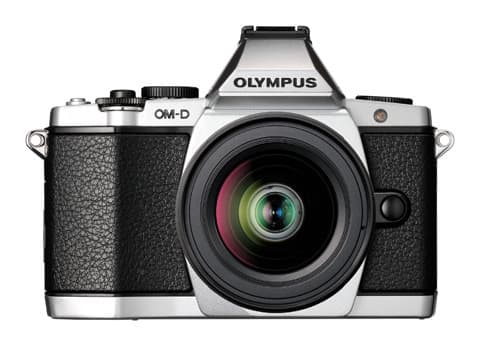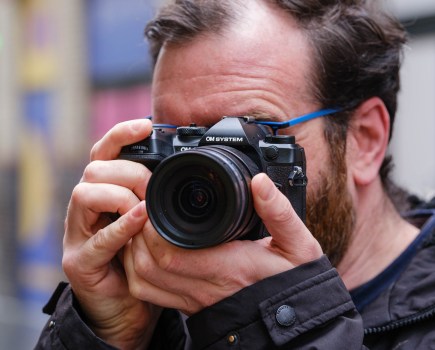With the OM-D, Olympus may have produced the range of digital cameras its users have been waiting for, but will the E-M5 model live up to the OM brand? Mat Gallagher looks at a prototype
The term ?reborn? is likely to be overused in forthcoming descriptions of Olympus?s new OM-D compact system camera range. As with the introduction of the Pen digital, the OM-digital brand harks back to the classic 35mm film models and the original OM series, with elements of its styling included in the new model. The first OM-D model will be the E-M5 and Olympus has made it clear that, as with the Pen range, it is the first of many.

I suspect that Olympus users have pined for a digital version of its old OM cameras for a long time. They miss the simple design and compact body of the OM-1 and OM10. The E-M5, then, should get a warm response, as it looks similar to the OM-4. There is certainly a growing trend for classic styling, and Olympus must have been spurred on by the success Fujifilm is having with its retro-styled compacts, and forthcoming interchangeable-lens X-Pro1. Of course, there will be those left disappointed by the specifications of this new Olympus model, as it doesn?t feature a full-frame sensor, but instead maintains the four thirds sizing and the 2x crop. Also, it doesn?t use the traditional OM lens mount. The new camera has the micro four thirds mount used on the Pen cameras, but users will still have the option of the Olympus OM-to-micro-four-thirds adapter to attach old lenses for manual-focus control.

Features
On first look, the new camera seems really impressive. It is available in silver
and black finishes, with the silver being the most eye-catching, but both are pleasant to the touch and feel solid in the hand. The giveaway to the camera?s digital identity is found on the back, as is often the case with these classic designs, due to the screen and menu functions. Unlike the Pen series, the E-M5 has a built-in electronic viewfinder. This has the same 1.44-million-dot resolution and 1.15x magnification as the VF-2 optional adapter for the Pen series, also featuring an eye sensor for activation and dioptre adjustment.
The image-stabilisation system remains sensor-based, as in previous four thirds and micro four thirds models, but now it has a five-axis adjustment. This means that as well as correction for the vertical and horizontal axis, it has rolling movement around all three (x, y, z) axes. According to Olympus, this extra movement allows the camera to avoid blur created by rolling body shake, which is not possible with regular stabilisation systems.

The E-M5 has a higher specification than the current Pen models. It uses a 16-million-pixel Live MOS four thirds sensor with 120fps readout for fast AF, and a new TruePic VI processor to provide ISO 25,600 capability and high dynamic range. This is likely to be the same sensor as used in Panasonic?s Lumix DMC-G3 and GX1. The single AF speeds are claimed to be faster than a DSLR, or any other compact system camera model, including the Nikon 1 and
the Sony NEX. Presumably this is due, in part, to the full-time AF system. In continuous AF it is claimed the camera carries a burst speed of up to 4.2fps, while with single AF it will take 9fps. We will have to wait and
see how it handles low-light AF, as this has remained an issue for other similar contrast-detection systems.

Build
Like the Pen range, the E-M5 features Olympus?s art filters and adds a new keyline mode to the existing array. One feature unique to the E-M5 is the ability to control the tonal range for highlight and shadow adjustments before you take an image, in much the same way as a fully customised art filter. The feature is controlled via the main control dial and a subdial on the top of the camera, with the results instantly viewable through the electronic viewfinder. This gives an added degree of control and avoids the need for any post-capture adjustment.
The magnesium body has been sealed to the same level as the E-5 DSLR, making it dustproof and splashproof when using a weatherproofed lens.

Measuring 121×89.6×41.9mm and weighing 373g, the E-M5 is smaller than the E-620 DSLR and OM-4Ti. The rear screen is a 3in OLED touch-panel unit, as featured on the Pen E-P3, but on a tilting bracket for vertical adjustment.
The standard kit lens for the E-M5 will be the existing 12-50mm f/3.5-6.3 optic but, like the Pen range, the new camera will look more at home with one of the short prime lenses, such as the 12mm or 45mm. Two further lenses, a 75mm f/1.8 and a 60mm f/2.8 macro, are under development. Additional accessories include an HLD-6 battery grip, an FL-600R hotshoe flashgun with a guide number of 50m @ ISO 100 and an LED video light.

With the broadening of the compact system camera market, the micro four thirds system used by both Panasonic and Olympus is proving to be a great compromise between size and quality. Although many people were hoping for an APS-C-sized sensor rather than the four thirds system, the four thirds mount is now well established with more than 25 compatible lenses and there are more in the pipeline from Olympus, Panasonic and Sigma. If this camera performs to the levels Olympus claims it can, and if this sensor is as good as that in the Panasonic Lumix DMC-GX1, the E-M5 could be the best compact system camera Olympus has produced to date.
The E-M5 will be available in late April, priced £1,149.99 for the kit version with
12-50mm f/3.5-6.3 lens. For more information, visit www.olympus.co.uk

Toshiyuki Terada, manager and group leader of the Product and Marketing Planning Group for Olympus Imaging, with the new E-M5








